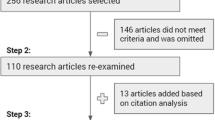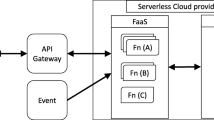Abstract
The server reconfiguration problem in edge computing under the constraints on QoS can become an integral part of the automatic-early analysis of the edge design. This paper proposes a constraint-based programming approach to introduce reconfigurable edge as a service (REaaS) for edge providers and businesses in order to automate efficient access to qualified edges. The approach guarantees the best-(re)configuration of services by addressing business QoS-based requirements in the form of a constraints-based solution at the early analysis phase. The proposed paradigm for REaaS is discussed in three phases including abstract meta-modeling, validation, and empirical analysis. We also provide automated support to generate clear visualization for edge servers in terms of QoS using a lightweight model checker, Alloy Analyzer. Using Alloy Analyzer, we separately explore the scalability and runtimes of an edge server (re)configuration on a running example and two real-world domains including online collaboration systems and smart homes. Furthermore, the performance of the proposed approach is discussed using three fully automatic SAT-solvers in terms of the runtime with different specified settings. Finally, the miss and hit ratios for different types of services at the same time are compared with a new proposed method that demonstrates % 9.7 hit ratio improvement after reconfiguration.











Similar content being viewed by others
References
Shi W, Cao J, Zhang Q, Li Y, Xu L (2016) Edge computing: vision and challenges. IEEE Internet Things J 3(5):637–646
Hassan N, Gillani S, Ahmed E, Yaqoob I, Imran M (2018) The role of edge computing in Internet of Things. IEEE Commun Mag 99:1–6
Skarlat O, Nardelli M, Schulte S, Dustdar S (2017) Towards qos-aware fog service placement. In: 2017 IEEE 1st International Conference on Fog and Edge Computing (ICFEC). IEEE, pp 89–96
Yousefpour A et al (2018) QoS-aware dynamic fog service provisioning. arXiv preprint arXiv:1802.00800
Cao J, Xu L, Abdallah R, Shi W (2017) EdgeOS_H: a home operating system for internet of everything. In: 2017 IEEE 37th International Conference on Distributed Computing Systems (ICDCS). IEEE, pp 1756–1764
Feld J (2004) PROFINET-scalable factory communication for all applications. In: IEEE International Workshop on Factory Communication Systems, 2004. Proceedings. IEEE, pp 33–38
Davis M, Logemann G, Loveland DW (1961) A machine program for theorem-proving. New York University, Institute of Mathematical Sciences, New York
Jackson D (2012) Software abstractions: logic, language, and analysis. MIT Press, Cambridge
Yu W et al (2018) A survey on the edge computing for the Internet of Things. IEEE access 6:6900–6919
Khan WZ, Ahmed E, Hakak S, Yaqoob I, Ahmed A (2019) Edge computing: a survey. Future Gener Comput Syst 97:219–235. https://doi.org/10.1016/j.future.2019.02.050
Roman R, Lopez J, Mambo M (2018) Mobile edge computing, fog et al.: a survey and analysis of security threats and challenges. Future Gener Comput Syst 78:680–698
Mann Z (2019) Optimization problems in fog and edge computing. In: Fog and edge computing: principles and paradigms, Chap 5. Wiley, pp 103–121. https://doi.org/10.1002/9781119525080.ch5
Bonomi F, Milito R, Zhu J, Addepalli S (2012) Fog computing and its role in the internet of things. In: Proceedings of the First Edition of the MCC Workshop on Mobile Cloud Computing. ACM, pp 13–16
Li G, Wang J, Wu J, Song J (2018) Data processing delay optimization in mobile edge computing. Wirel Commun Mob Comput 2018:1–9
Mohan N, Kangasharju J (2018) Placing it right!: optimizing energy, processing, and transport in Edge-Fog clouds. Ann Telecommun 73(7–8):463–474
Lyu X et al (2018) Selective offloading in mobile edge computing for the green internet of things. IEEE Netw 32(1):54–60
Deng S, Wu H, Taheri J, Zomaya AY, Wu Z (2016) Cost performance driven service mashup: a developer perspective. IEEE Trans Parallel Distrib Syst 27(8):2234–2247
Deng S, Wu H, Tan W, Xiang Z, Wu Z (2017) Mobile service selection for composition: an energy consumption perspective. IEEE Trans Autom Sci Eng 14(3):1478–1490
Surobhi NA, Jamalipour A (2014) A context-aware M2M-based middleware for service selection in mobile ad-hoc networks. IEEE Trans Parallel Distrib Syst 25(12):3056–3065
Zhou A, Wang S, Li J, Sun Q, Yang F (2016) Optimal mobile device selection for mobile cloud service providing. J Supercomput 72(8):3222–3235
Chakraborty D, Joshi A, Finin T, Yesha Y (2005) Service composition for mobile environments. Mob Netw Appl 10(4):435–451
Md AQ, Varadarajan V, Mandal K (2019) Efficient algorithm for identification and cache based discovery of cloud services. Mob Netw Appl 24:1181–1197. https://doi.org/10.1007/s11036-019-01256-0
Yang K, Galis A, Chen H-H (2010) Qos-aware service selection algorithms for pervasive service composition in mobile wireless environments. Mob Netw Appl 15(4):488–501
Tyan J, Mahmoud QH (2005) A comprehensive service discovery solution for mobile ad hoc networks. Mob Netw Appl 10(4):423–434
Jia B, Hao L, Zhang C, Zhao H, Khan M (2019) An IoT service aggregation method based on dynamic planning for QoE restraints. Mob Netw Appl 24(1):25–33
Silvestro A, Mohan N, Kangasharju J, Schneider F, Fu X (2018) MUTE: MUlti-tier edge networks. In: Presented at the Proceedings of the 5th Workshop on CrossCloud Infrastructures and Platforms, Porto, Portugal
Wu H, Deng S, Li W, Fu M, Yin J, and Zomaya AY (2018) Service selection for composition in mobile edge computing systems. In: 2018 IEEE International Conference on Web Services (ICWS). IEEE, pp 355–358
Wang S, Zhao Y, Huang L, Xu J, Hsu C-H (2017) QoS prediction for service recommendations in mobile edge computing. J Parallel Distrib Comput 127:134–144. https://doi.org/10.1016/j.jpdc.2017.09.014
Silvestro A, Bifulco R, Schneider F, Fu X, Kangasharju J (2017) MISE: MIddleboxes SElection for multi-domain service function chains. In: Proceedings of the 2nd Workshop on Cloud-Assisted Networking. ACM, pp 37–42
Ascigil O, Phan TK, Tasiopoulos AG, Sourlas V, Psaras I, Pavlou G (2017) On uncoordinated service placement in edge-clouds. In: 2017 IEEE International Conference on Cloud Computing Technology and Science (CloudCom). IEEE, pp 41–48
Ahmadvand H, Goudarzi M, Foroutan F (2019) Gapprox: using Gallup approach for approximation in Big Data processing. J Big Data 6(1):20
Ait Wakrime A, Labbaci H, Rekik M, Cheniki N, Sam Y (2020) Toward reconfiguration of BPaaS based on SaaS services using clustering and boolean satisfiability. SN Comput Sci 1(3):156
Selimi M, Cerdà-Alabern L, Freitag F, Veiga L, Sathiaseelan A, Crowcroft J (2019) A lightweight service placement approach for community network micro-clouds. J Grid Comput 17(1):169–189
Taneja M, Davy A (2016) Resource aware placement of data analytics platform in fog computing. Procedia Comput Sci 97:153–156
Wang S, Zhao Y, Xu J, Yuan J, Hsu C-H (2019) Edge server placement in mobile edge computing. J Parallel Distrib Comput 127:160–168
Rahman T, Yao X, Tao G, Ning H, Zhou Z (2019) Efficient edge nodes reconfiguration and selection for the internet-of-things. IEEE Sens J PP:1
Alouneh S, Al Shayeji MH, Mesleh R (2019) A comprehensive study and analysis on SAT-solvers: advances, usages and achievements. Artif Intell Rev 52(4):2575–2601
Patel R, Borisaniya B, Patel A, Patel D, Rajarajan M, Zisman A (2010) Comparative analysis of formal model checking tools for security protocol verification. In: International Conference on Network Security and Applications. Springer, pp 152–163
Berriri A, Kushik N, Zeghlache D (2019) Extended finite state machine based test generation for an OpenFlow switch
Hubaux A, Heymans P, Schobbens P-Y, Deridder D, Abbasi EK (2013) Supporting multiple perspectives in feature-based configuration. Softw Syst Model 12(3):641–663
Chandrasekharan A, Große D, Drechsler R, Formal verification of approximate sequential circuits. In: Design automation techniques for approximation circuits. Springer, cham pp 51–64. https://doi.org/10.1007/978-3-319-98965-5_4
Hallerbach A, Bauer T, Reichert M (2010) Capturing variability in business process models: the Provop approach. J Softw Maint Evol: Res Pract 22(6–7):519–546
Kumar A, Yao W (2012) Design and management of flexible process variants using templates and rules. Comput Ind 63(2):112–130
La Rosa M, van der Aalst WM, Dumas M, Ter Hofstede AH (2009) Questionnaire-based variability modeling for system configuration. Softw Syst Model 8(2):251–274
Wakrime AA, Boubaker S, Kallel S, Gaaloul W (2019) A SAT-based formal approach for verifying business process configuration. In: International Conference on Big Data Innovations and Applications. Springer, pp 47–62
Nam W, Kil H, Lee D (2008) Type-aware web service composition using boolean satisfiability solver. In: 2008 10th IEEE Conference on E-Commerce Technology and the Fifth IEEE Conference on Enterprise Computing, E-Commerce and E-Services. IEEE, pp 331–334
Oh S-C, Lee D, Kumara SR (2007) Web service planner (wspr): an effective and scalable web service composition algorithm. Int J Web Serv Res (IJWSR) 4(1):1–22
Oh S-C, Yoo J-W, Kil H, Lee D, Kumara SR (2007) Semantic web-service discovery and composition using flexible parameter matching. In: The 9th IEEE International Conference on E-Commerce Technology and The 4th IEEE International Conference on Enterprise Computing, E-Commerce and E-Services (CEC-EEE 2007). IEEE, pp 533–542
Ait Wakrime A, Jabbour S, Hameurlain N (2020) A MaxSAT based approach for QoS cloud services. Int J Parallel Emerg Distrib Syst 35(6):641–651
Wakrime AA, Jabbour S (2017) Formal approach for QoS-aware cloud service composition. In: 2017 IEEE 26th International Conference on Enabling Technologies: Infrastructure for Collaborative Enterprises (WETICE). IEEE, pp 30–35
Rekik M, Wakrime AA, Cheniki N, Sam Y (2019) On the Fly reconfiguration of BPaaS based on SaaS services federation and SAT solving techniques. In: 2019 IEEE 28th International Conference on Enabling Technologies: Infrastructure for Collaborative Enterprises (WETICE). IEEE, pp 37–42
Quinton C, Haderer N, Rouvoy R, Duchien L (2013) Towards multi-cloud configurations using feature models and ontologies. In: Proceedings of the 2013 International Workshop on Multi-Cloud Applications and Federated Clouds. ACM, pp 21–26
Sirtl H (2008) Software plus services: new IT-and business opportunities by uniting SaaS, SOA and Web 2.0. In: 2008 12th International IEEE Enterprise Distributed Object Computing Conference. IEEE, pp xviii–xviii
Suto T, Bradley JT, Knottenbelt WJ (2006) Performance trees: a new approach to quantitative performance specification. In: 14th IEEE International Symposium on Modeling, Analysis, and Simulation. IEEE, pp 303–313
Brill E (1992) A simple rule-based part of speech tagger. In: Proceedings of the Third Conference on Applied Natural Language Processing. Association for Computational Linguistics, pp 152–155
Jayanthi J, Jayakumar K, Akalya B (2011) Personalized query expansion based on phrases semantic similarity. In: 2011 3rd International Conference on Electronics Computer Technology, vol 4. IEEE, pp 273–277
Das A, Patterson S, Wittie M (2018) Edgebench: benchmarking edge computing platforms. In: 2018 IEEE/ACM International Conference on Utility and Cloud Computing Companion (UCC Companion). IEEE, pp 175–180
Jackson D (2002) Alloy: a lightweight object modelling notation. ACM Trans Softw Eng Methodol (TOSEM) 11(2):256–290
Author information
Authors and Affiliations
Corresponding author
Additional information
Publisher's Note
Springer Nature remains neutral with regard to jurisdictional claims in published maps and institutional affiliations.
Rights and permissions
About this article
Cite this article
Nooraei Abadeh, M., Ajoudanian, S. Reconfigurable edge as a service: enhancing edges using quality-based solutions. J Supercomput 77, 6754–6787 (2021). https://doi.org/10.1007/s11227-020-03579-2
Accepted:
Published:
Issue Date:
DOI: https://doi.org/10.1007/s11227-020-03579-2






